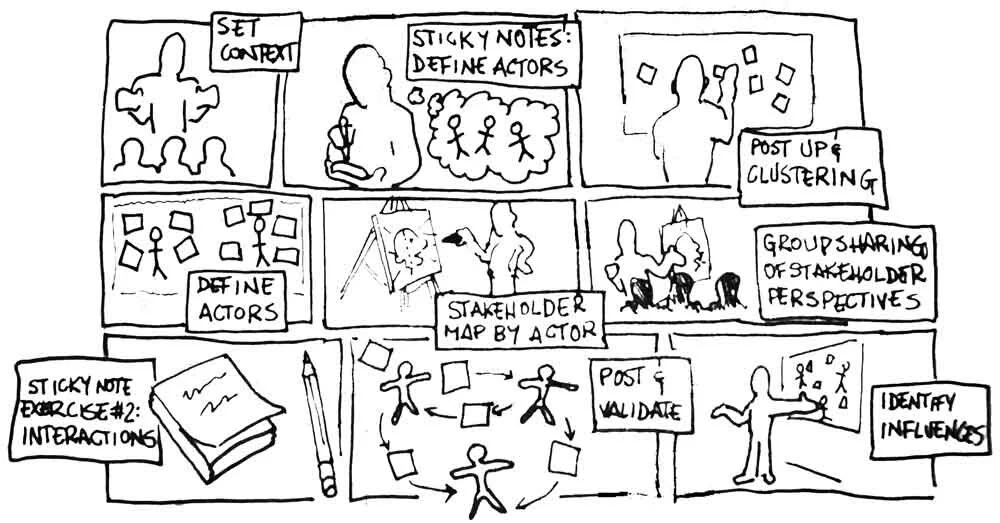Structuring conversations for visualization
There’s a constant challenge with creating complex visualizations; how to manage the process of gathering input from the group? Solitary acts of artistic brilliance create beautiful pieces of work, but they may not actually connect with the intent of the group, and it’s pretty much impossible to capture a meaningful level of detail on the complexities of the process, system or concept being modeled.
On the other hand, involvement from the group – if it isn’t structured enough – can lead to pretty confused images, or can force you to resort to “recording” rather than synthesizing.
I did a quick sketch of what I like as a process for engaging a couple of groups to create a stakeholder map; a complex interaction diagram that would model the actors, interactions and influences within a given system.
I like this approach because it gives the chance to really get some in depth perspectives before too much structure gets imposed on it, but gives lots of opportunity to introduce some visual frameworks and metaphors through the exercise to keep it creative. The result is a cohesive body of information with a lot of nested complexity; perfect fodder for using as an input for the development of the final visualization.



Excellent post. I’ve thought about this one too. I tried something that worked pretty well and took into account most of what you’ve identified.
We had a rough outline of a big storymap on paper and gave small groups the assignment of creating parts of the storymap on their whitewalls. When they had a good idea of what their section should look like, one member of the group came over to the big storymap on the wall and worked with the graphic facilitator to finalize the actors and relationships.